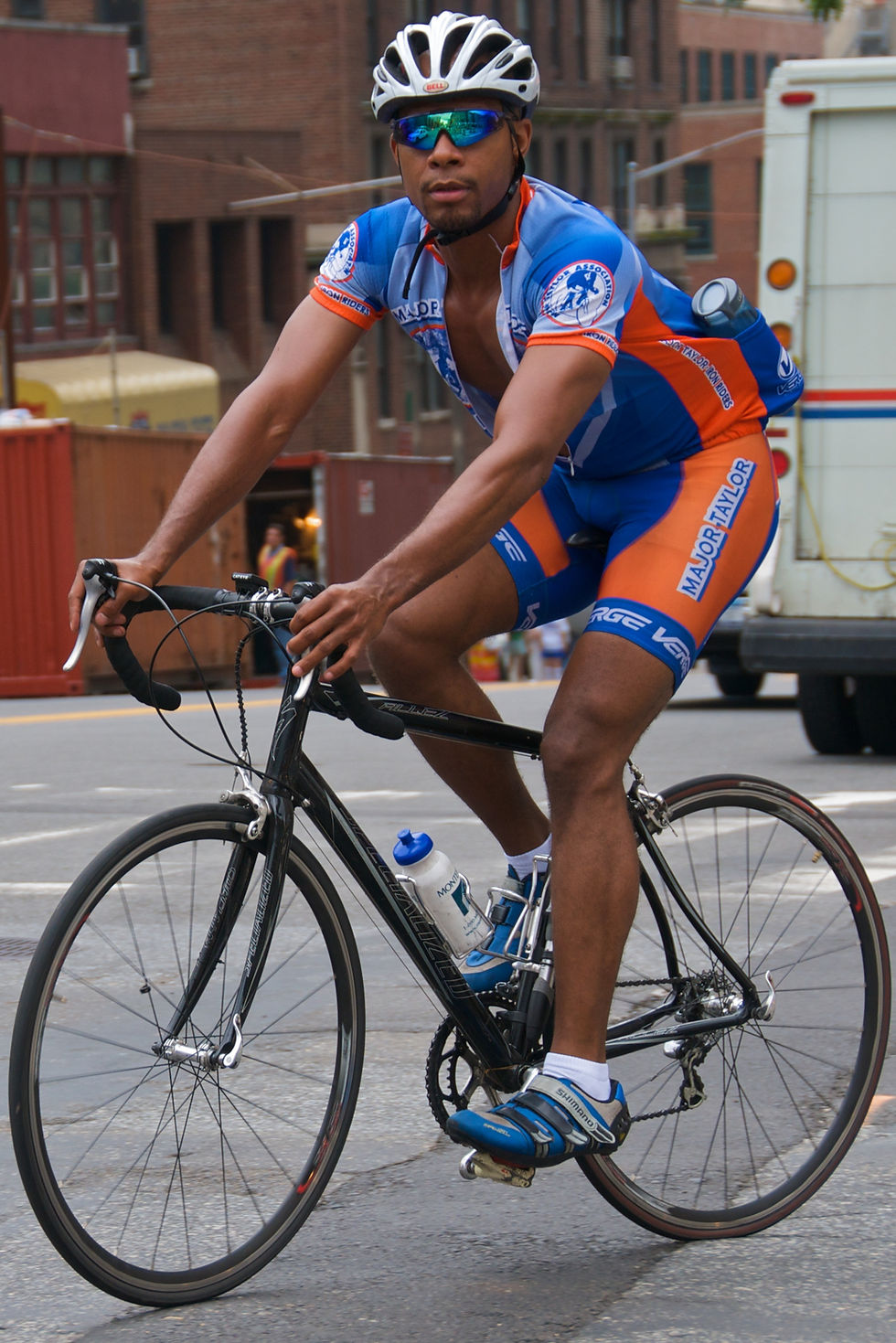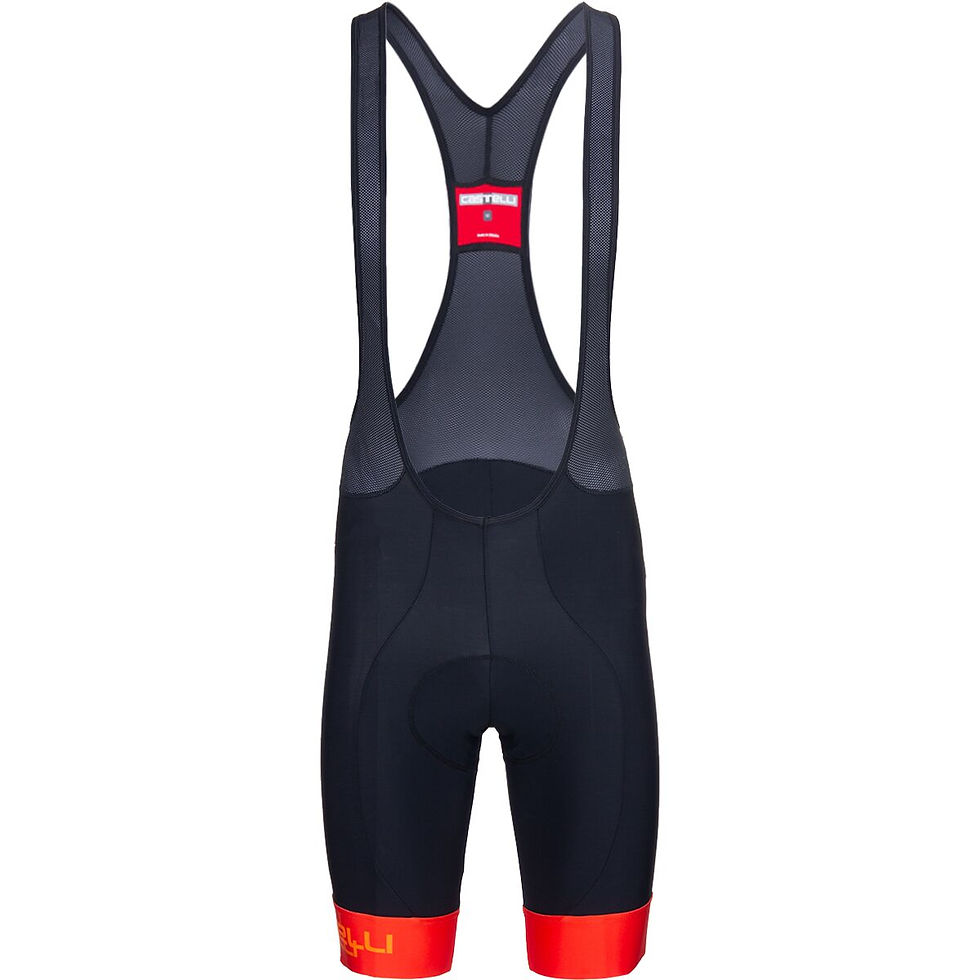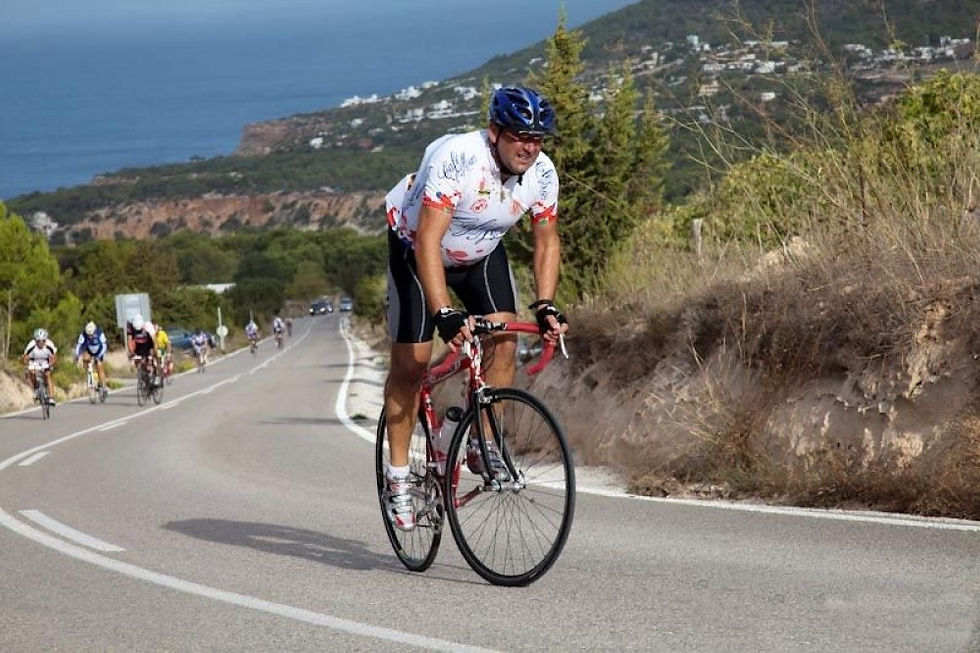Spandex?!?
- John Dahl
- Jun 29, 2021
- 7 min read
When riders begin to take the sport more seriously there are few changes that are as befuddling to the general public as venturing into the world of cycling clothing. Yes, spandex is necessary, and no we don't wear it because its "athleisure wear".

I hear many recreational riders who aren't yet "cyclists" question why people wear such silly outfits when they ride. Quite frankly, there is a lot of distain from the general public for cyclists, and the complaints or comments usually start with those people wearing the funny clothes. Most of the reason people throw so much "shade" in the direction of cycling clothes is a fundamental lack of understanding. Through this post I would like to dispel the weirdness of spandex, as well as provide a practical guide to these clothes with what I know so far. Just like steel toe work boots aren't worn for fashion, cycling clothing serves some very specific purposes.
I personally believe that most people don't understand that above 15 MPH on a bike lots of things change. If you are reading this you may already know just how irritating flapping clothing can be on any ride longer than half an hour. Initially the push to get into cycling clothing (AKA "Kit") isn't for aerodynamics in terms of speed, but it's to rid ourselves of flapping loose clothing. Personally as someone who is larger than I would like to be, spandex isn't something I take lightly, and I certainly don't see it as a fashion choice. The clothes are functional, but if I am going to wear them, I may as well like them and make the right choices. I still haven't made any appearances at a local coffee shop, or anything other than a convenience store along my route because when I wear cycling clothes its only to ride.
Let's start with the overall fit, this should apply to all clothing worn on the bike. Once we establish that loose and/or flapping clothing is a no-no on a road bike. The first rule is comfort, all of your clothing should be comfortable. Spandex is compressive to hold things in place, as well as to provide support to your muscles, but the materials and the seams do have their limits. Typically Spandex is used in shorts/pants/tights which are the most important to cyclists in terms of fit, as these are supposed to be a compressive garment for your legs. While these garments are compressive, they are not supposed to be TIGHT or constrictive. If they aren't comfortable, the minor annoyances you feel will become major pain points when you ride for any length of time. Cycling clothing seems to have a variety of fit options from relaxed, to race fits. These too are to be taken into account. Although, most of these fit profiles are usually aimed at the Jersey fit and not the shorts/pants a good fit for YOU is essential to comfort.
Many makers market a fit called "relaxed" which sounds like it should be close to normal clothing. In reality, a relaxed jersey isn't tight at all, but it shouldn't be loose and flapping, they are made for all day comfort and great for recreational or daily rides. For riders like myself who are a little portly, these jerseys offer a lot of comfort as they are usually cut fuller in the midsection than other jersey fits. Where to look out for these is sleeve fit, with many makers they carry the relaxed fit way too far with the sleeves and you will only experience flapping on your arms. I have had to toss numerous jerseys because the arm flapping was excessive to the point that I thought I might actually be a bird. Race fit on the other hand is compressive and usually very thin material, this fit should definitely be compressive all over but not constricting. I have a couple of kits that are race fit, and although I truly have reservations about how I look in them being a larger rider, they are super comfortable for long fast rides, especially as the materials for the race fit jerseys I have provide insane moisture wicking as well as the best ventilation of any other clothes I have. It seems counter intuitive, but I have found that race fit (or something close to it) has been the coolest in terms of temperature regulation of any fit offered for me.

For shorts or pants I can't stress two things enough, bibs and padding. Yes this goes back to silly cycling clothing, but there are reasons. Regular bike shorts as you think of them do you no favors if they end at the waist. With regular "shorts", your jersey will often ride up exposing your back (can we say sunburn tramp stamp?). But, the main reason nobody wears these shorts is that they don't stay put. When you ride all of the motion is centered around the waist, you are bent over on the bike and your legs are constantly moving. All of that motion shouldn't be anchored at your waist because the shorts/pants will move too, and you will spend a good portion of your ride adjusting your bottoms. I have never personally felt pinching quite as annoying as shorts that have shifted dramatically while riding (you may even need to stop to adjust)...its just not worth it. Steer clear of regular shorts and get bibs, no matter how silly you think they look initially.
Bibs are basically shorts/pants with built in suspenders. The suspenders do keep the shorts up, but more importantly they set the anchor for the garment to your shoulders and as a result they stay put. Once on, you don't need to keep adjusting your shorts. I can't stress how important it to not have to fuss with your clothing on a ride.
The Chamois (aka shammy, or chammy) portion of your shorts is the key to your comfort. Many riders think they need a padded saddle for comfort, but in reality the saddle (covered soon in a post about bike fit) is there to support your sit bones, not to provide that much cushion. Your chamois should provide just the right amount of padding for where you rest on the saddle. It doesn't take much padding to make the world of difference. There are a range of options here from just foam, to gel, to designs that have different amounts of padding in different areas. This (aside from materials and construction) is a primary driver in the price of bottoms. Some of the best known brands like Castelli, Assos, Rapha, Pearl Izumi and others will charge more for better pads. When you get to the point where you really know the difference, the accompanying sticker shock will also set in, with the best of the best of the best shorts being over $200 a pair (which for comfort on longer rides, I will gladly pay).
Also note, riders do not wear anything under their shorts except for maybe some chamois cream. Added materials can bunch, and pinch... that and they look strange. I never thought I would ever be writing about visible panty line (what my wife would call it), but it is really a thing. If you are wearing something under your shorts, bikers will see, and trust me, you don't want to be on the receiving end of THAT judgment.

There are some other strange articles of clothing you may not be familiar with that cyclists use regularly. Arm and leg warmers (spandex sleeves, and pants legs) designed to be able to be worn when its cold but you know the weather will be changing so you can add or remove them as needed while riding. Shoe covers are also important as bike shoes are designed for ventilation, and when it gets cold those vents need to be covered to keep your feet warmer than ice cubes. And... there is one thing recommended that all cyclists carry with them at all times (except where I live in Arizona) and that is a Gilet, or a rain/wind vest, it is essentially a super lightweight sleeveless jacket for when the weather changes and its easily packable in a jersey pocket. When you are riding, added moisture can make a journey very cold VERY fast. The Gilet is for the sudden rain or cold snap and in most places it's as essential as a spare tire.
Lastly, the subject of style. This is a personal choice but there are a few things to think about. Everyone wants to look like a pro, but you won't see many bikers riding around with jerseys from their favorite riders or teams. Usually, riders will have jerseys or bibs from their local clubs, or bike shops. I personally haven't joined a team, so I change things up. Currently I have a retro Twinkies jersey that I love (almost too much to wear for fear I won't be able to get a new one). Everyone has opinions on what looks good, but I will relate a few facts that may help you pick. Cyclists get hit by cars all the time. Drivers pull out in front of us, cut us off, and in general don't give us the space we need. While the discussion about crappy drivers will be written about later, one of the biggest weapons a cyclist has is actually being seen. As this post relates to clothing I will keep this about visibility related to clothing. Bright colors help, even colors which aren't florescent can make a big difference in being seen. Studies have shown that drivers see motion better than just color blocks, so adding color at the bottom of your shorts near your knees or thighs, as well as on your ankles (socks) makes a big difference in being seen because your legs are always moving (well they should be). Adding pops of color that stand out will make you stand out to drivers. I would rather have them make a comment about that crazy dressed cyclist, than have them asking "what cyclist?". This comes back to the funny clothing. If drivers notice you, you are winning the game, why not just have fun with it? I am always on the lookout for clothes that are somewhat cool looking and I know will get seen.
I will review individual articles of clothing and clothing brands later, as well as other clothing items like shoes, glasses, and helmets.





Comments